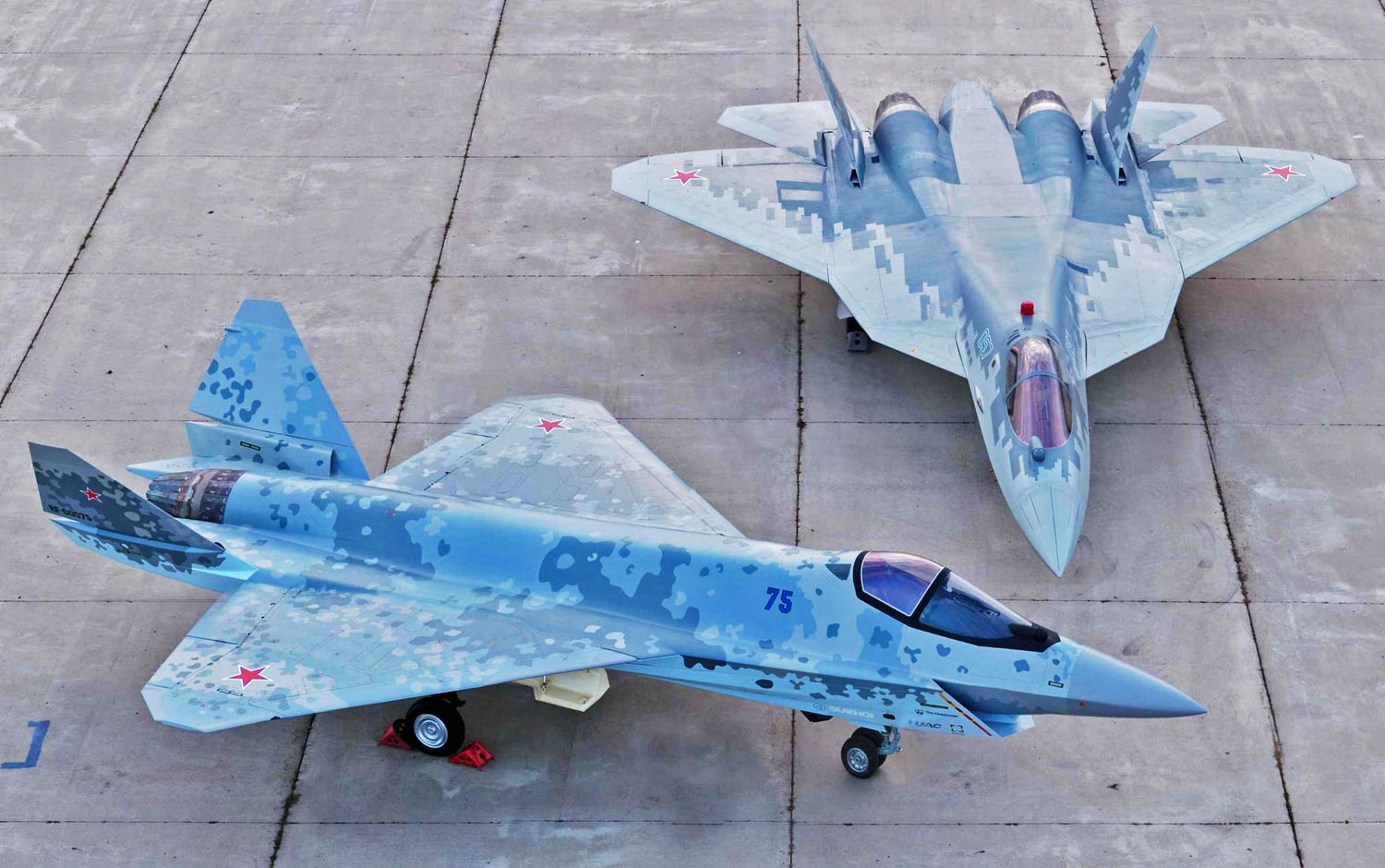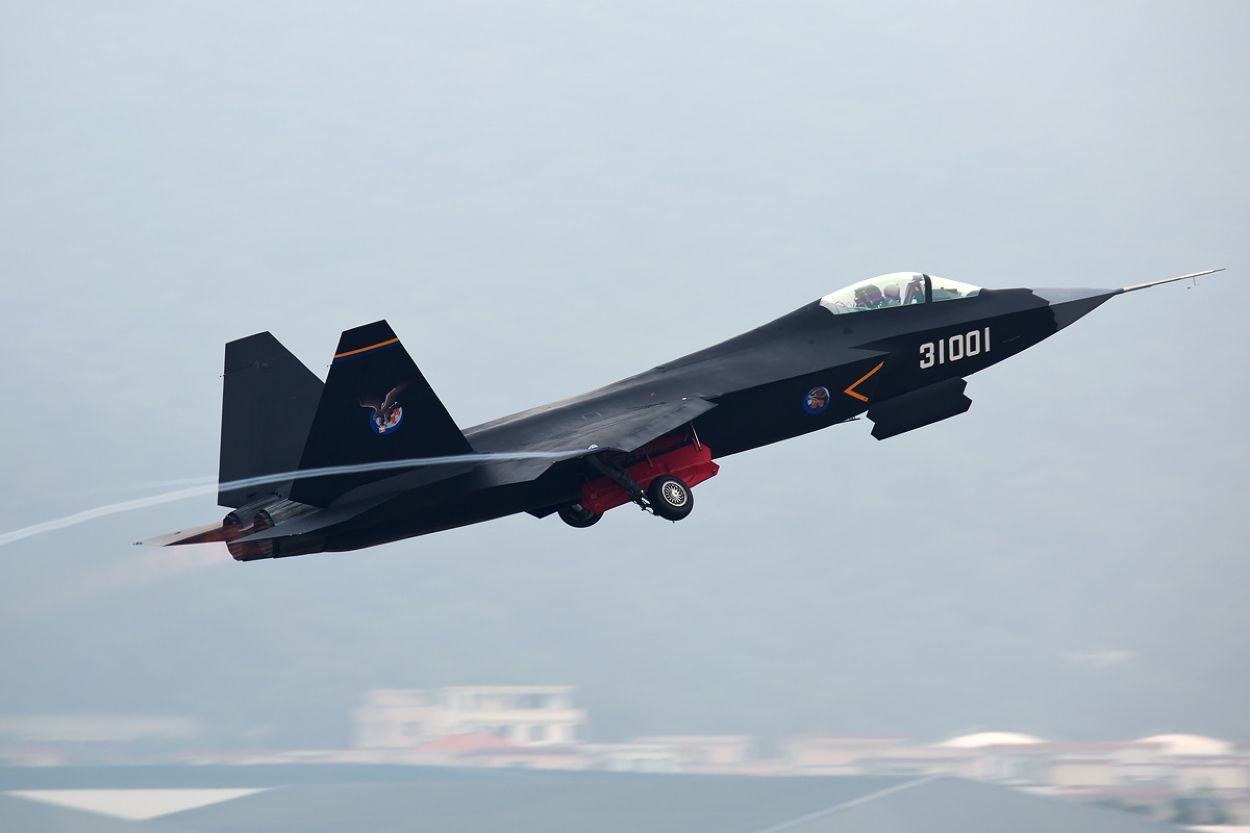China’s J-31 has joined Russia’s Su-75 ‘Checkmate’ to emerge as a competitor to the American F-35 fighter jet following Pakistan’s announcement to acquire the Chinese combat aircraft over the next few years.
Put differently, the Chinese fighter is poised to compete with the Russian jet in the affordable fifth-generation fighter market in developing countries in the future. The planes’ technical and commercial evolution and geopolitical developments point towards this possibility.
Both planes were developed with an explicit commercial purpose. The Russian Su-75 was featured in a promotional advertisement showing Indian and Emirati aviators, among pilots from other Global South countries, gathering in a hangar where the plane was unveiled.
The FC-31 (as the J-31 was previously called) was first revealed in a 2014 air show in China by the Shenyang Aircraft Corporation (SAC), which included military attaches and delegations of major developing countries.
The jet initially did not generate interest, even from the People’s Liberation Army – Navy (PLAN) and PLA – Air Force (PLAAF). The project developed into a full-fledged Fifth Generation fighter platform following heightened tensions with the US in the western Pacific, beginning with the Donald Trump Presidency.
As regards the Su-75, Russia also announced late last year that it would step up a specialized development and supply chain mechanism that suited joint manufacturing and technology sharing arrangements with other nations, baring the lightweight stealth fighter’s core orientation as an export platform.
Shenyang Transforming Itself For J-31 Export
A direct future commercial clash between the FC-31 and the Su-75 was noted in a February 2022 Global Times article that reported the setting up of an office exclusively “dedicated to promoting the fighter in the international market” and to find customers actively.
“Facing competition from foreign counterparts, like the US F-35 and the Russian Su-75, China’s FC-31 has its advantages including advanced technology, acceptable pricing, the lack of political restrictions, and complete service,” GT said.
Zhan Qiang, Deputy General Manager at the SAC, said the firm “transformed its traditional planning-oriented marketing mindset and actively explored the arms market for high-end aviation products (making) good use of air shows.”
It publicly flew for the first time on November 12, 2014, during the Zhuhai Air Show. An improved prototype, with airframe modifications, an electro-optical targeting system, a larger payload, improvements in stealth, and upgraded electronics, made its maiden flight in December 2016.
By late 2018, reports suggested that the program received government funding and interest from PLAAF and PLAN. By June 2020, a third variant of the J-31 with a bigger radar and some radar signature reduction measures had been developed. Some started calling the new fighter the J-35.

The naval variant of the aircraft reportedly made its maiden flight on October 29, 2021. It was modified with a catapult bar and folding wings and was meant to operate from the under-development Type 003 aircraft carrier with an electromagnetic Aircraft Launch System.
Retired IAF Mirage-2000 pilot and director of the Center for Air Power Studies (CAPS) Air Marshal Anil Chopra acknowledged in a previous article for the EurAsian Times that the fighter can evolve into a credible aerial platform in the context of the PAF plans to acquire it. “It will give better strike power and may change the dynamics in the subcontinent till India acquires its own,” Chopra said.
The GT report quoted Wei Dongxu, a Beijing-based military expert, who said the US’s F-35 is mainly meant for US allies and partners. “While many countries want to procure it, they lack enough budget or face a wide range of export restrictions set by the US. Russia has revealed its new Su-75 stealth fighter, but it has yet to make its maiden flight,” Wei added.
Russia Announces Modifications To Su-75
On November 13, Rostec State Corporation, Russia’s government arms production Organization, announced a broader marketing effort to push the jet as an international defense program on the sidelines of the Dubai Airshow.
Before that, on February 16, 2023, Rosoboronexport CEO Alexander Mikheev said, “Russia was inviting Middle Eastern countries to create weapons jointly, including participating in the ‘Checkmate’ fifth-generation light fighter project.”
“Today, we are actively working on proposals for the most relevant forms of partnership for Middle Eastern states, primarily related to technology transfer, joint development, and offset programs. Rosoboronexport is considering options for jointly creating modern high-tech products, including a fifth-generation fighter based on a light tactical aircraft Checkmate,” Mikheev said.
Then, in July of that year, United Aircraft Corporation (UAC) filed a series of patents with Russia’s Federal Intellectual Property Service (FIPS), revealing modifications to the original Su-75 design that included a two-seat tandem variant and an unmanned variant.
This modification involves extending and angling the wing’s trailing edge, which results in an increased wing area and potentially a slight reduction in the aircraft’s rear radar signature.
Additionally, there seems to be a slight advancement in the engine installation. The fuselage has also undergone modifications, seemingly increasing the internal capacity of the aircraft.
This change suggests a possibility of enlarged side armament bays for housing short-range air-to-air missiles or an increased internal fuel capacity for the Checkmate, or perhaps both modifications have been implemented.
UAC has also introduced the concept of a “single-engine two-seater stealth aircraft.” Similar to other two-seater Sukhoi models, the modifications incorporate a tandem cockpit configuration, with the rear seat elevated to provide improved forward vision.

J-31 Seems To Have The Lead
Deputy Prime Minister of the Russian Federation and head of the Ministry of Industry and Trade, Denis Manturov, has also estimated the potential unveiling of a prototype Su-75 by late-2025.
By then, China will have chosen the final prototype of the FC-31/J-31 and initiated a limited series production (LSP), if not the squadron service. Thus, the J-31 commands a slight commercial advantage in terms of seeing operational service with the origin country sooner than the Su-75.
Naturally, Russia, too, would have to adopt some batches of the Su-75 itself to convince international buyers. But it could reach that stage much later than the J-31.
The only difference is that one is a single-engine, and the other is a two-engine jet. The two planes are technical and commercial competitors in the lightweight, affordable, low-visibility/stealth fighter category.
- The author can be reached at satamp@gmail.com
- Follow EurAsian Times on Google News




